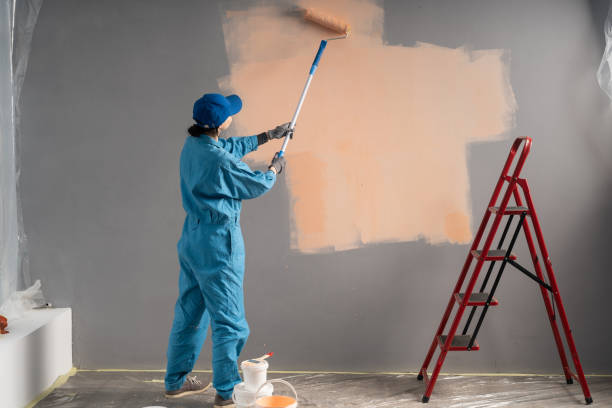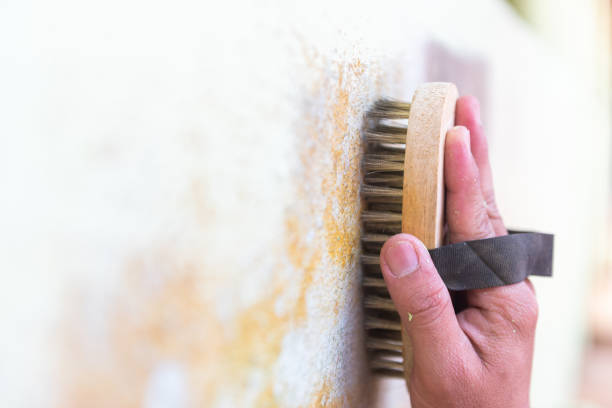Learning how to paint walls requires patience, preparation, and attention to detail. Interior painting can be exciting as well as challenging. To paint walls effectively, start by preparing the room and the walls, apply paint with proper techniques, and finally clean up. You need to ensure you have the right supplies for the paint job. Whether it’s a small touch-up or a complete transformation, Linx Painting has the expertise to deliver flawless results, tailored to your vision.
The Art of Wall Painting: Tips For Stunning Results
Are you thinking about repainting your bedroom and transforming your space with your own handiwork? With their hearts full of ambition, many homeowners envision a serene escape from the vibrant chaos of their previous makeshift accommodations. A DIY paint job isn’t unmanageable, and beginners should focus on the right tools and techniques to create a more inviting atmosphere and even improve their mood. Interior painting offers enhanced aesthetics, improved air quality, and increased protection for your walls, boosting home value.

Here are the essential tips for painting walls for a vibrant and fresh look.
Preparation
Clear the room. Remove furniture and cover it with drop cloths to prevent splatters. Protect the floor with old newspapers. Clean the walls using a sponge and warm, soapy water to remove all dust and grime. Use spackle and filler to cover any imperfections. Lightly sand the walls for a smooth surface. Mask the edges and trims. Use painter’s tape to protect areas like baseboards, windows, and door frames.
| Interesting factThere has been an increased demand for anti-microbial paints and coatings in the US, post-pandemic. |
Primer
Apply a coat of primer, especially if painting over a dark color, glossy finish, or bare drywall. It ensures better paint adhesion and a more uniform finish. Allow the primer to dry completely before moving on to painting walls in your interior painting project.
Painting
Mix and stir the paints thoroughly to ensure even color and consistency. Start with cutting in, use a brush to paint along edges, corners, and trims, where a roller can’t reach. Next, use a quality paint roller and apply paint in a W or M pattern. Dip the roller into the paint tray and roll it on the ribbed section to remove excess paint. Roll in multiple directions. Fill in the gaps with smooth, even strokes. Allow the first coat to dry completely. Apply a second coat to ensure even coverage and depth of color.
Cleanup
Carefully peel off painter’s tape before the paint dries completely to prevent peeling.. Wash brushes and rollers thoroughly with warm water and soap, and follow the manufacturer’s instructions.. Properly dispose of drop cloths, used tape, and other materials.

| Did you know?A new study has shown that thermal reflective paints( designed to reflect up to 90 % of the heat) hold water from the environmental humidity and slowly release it, like the body sweat, boosting reflectivity and strength. |
Tips for Best Results
- Choose a paint color that complements the furniture and interior decor of each room.
- When rolling, slightly overlap each stroke to ensure even coverage.
- Avoid overloading the roller and keep the paint thin for the best finish.
- Work in small sections, overlapping the previous section while the paint is still wet to avoid lap marks.
- Make sure there is adequate light in the room to see your work and ensure smooth coverage.
- Invest in quality brushes and rollers for a smooth and even finish.
- The room should be well-ventilated, open the windows, or use a fan to ensure proper airflow and drying.
Conclusion
Interior painting isn’t about just applying color. It’s about the satisfaction of creating something beautiful with your hands. Basic steps involve initial surface preparation, priming, applying paint, and followed by cleanup. Knowing the right techniques can help beginners master this seemingly challenging job and achieve a sense of accomplishment with the updated home look.
FAQs
Where should I start when painting a room?
Start from the top and work your way down to avoid any drips.
What is the recommended technique used for wall painting?
A sponge roller can be used for covering large surfaces. Sometimes it involves laying down undiluted paint in a patterned or molten way to disguise flaws on the wall’s surface.
What is the best technique for beginners when painting walls?
Start with cutting in (painting edges and corners), using a brush, then using a roller for wall paints, and start covering larger areas.
How do I prepare walls for painting?
Clean walls, fill cracks, sand lightly, and mask trims with painter’s tape. Good prep ensures a polished, long-lasting paint job.
What tools do beginners need for wall painting?
A roller, angled brush, painter’s tape, drop cloths, primer, and quality paint are essential for a smooth and stress-free DIY project.
